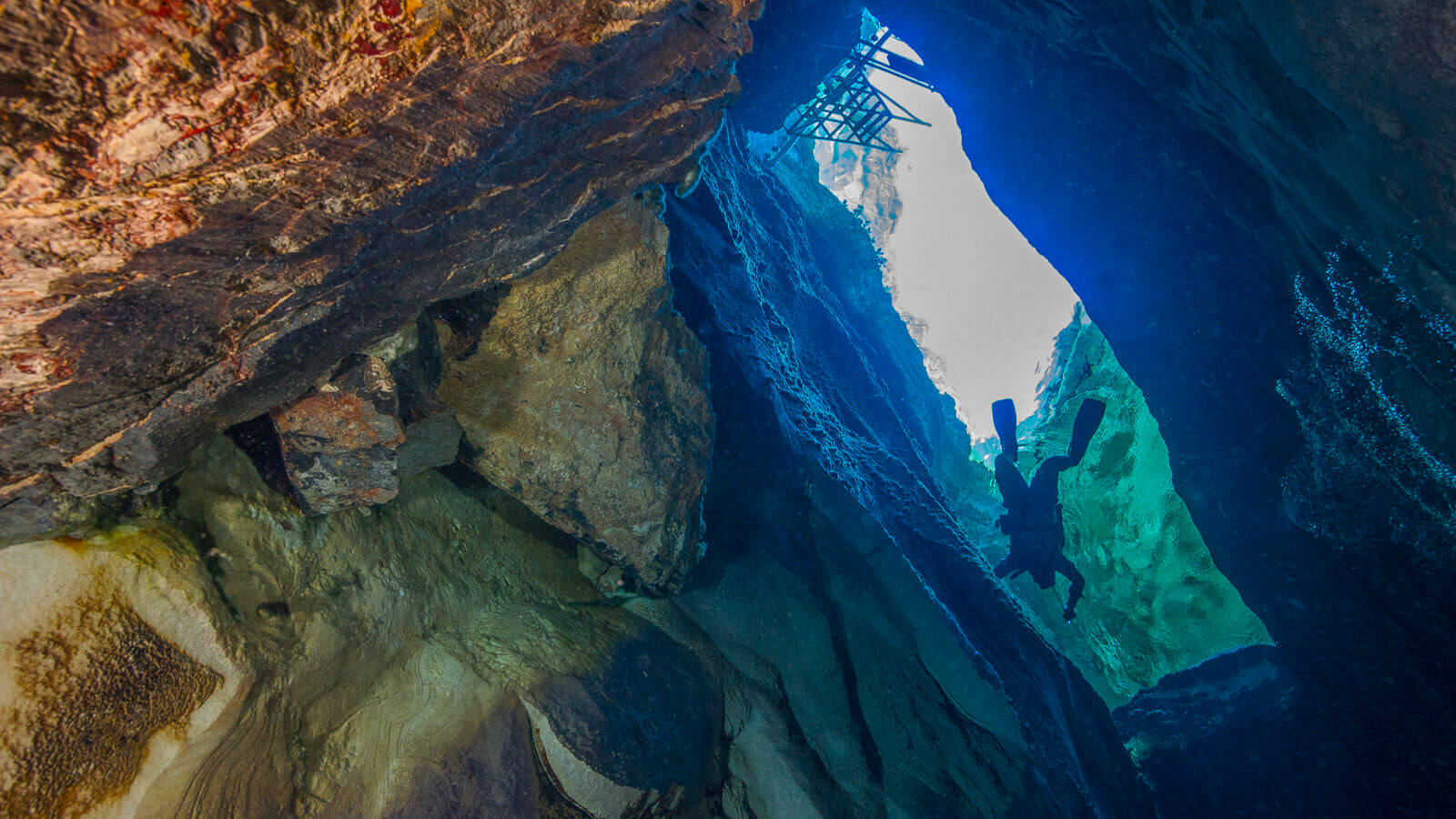
Ash Meadows NWR
Ash Meadows NWR
10 Things You Need To Know About Devils Hole And The World’s Rarest Fish
1. The Devils Hole Pupfish is the Rarest Fish in the World
There are days when life just throws you a luxurious moment, like the kind where you suddenly come to grips with being in an extraordinary place, or where you find yourself crossing paths with a type of wildlife that doesn’t exactly occupy your normal, any-old-kinda Tuesday. However, everything going on with the Devils Hole pupfish encompasses both, arming you with plenty of reason to set some days aside—heck, even a Tuesday—to understand and live this whole excursion for yourself. It’s that cool. There is so much to write home about the Devils Hole pupfish and its crazy-alluring environment, so—please—read on! But if you take away one thing—and one thing only—let it be this: it’s the rarest fish in the whole world. There are different types of desert pupfish, sure, but the Devils Hole variety (Cyprinodon diabolis, if you want to get technical) has only about 100-ish individuals left in existence, all living together in the smallest, and probably most unique habitat of any known vertebrate species on earth.
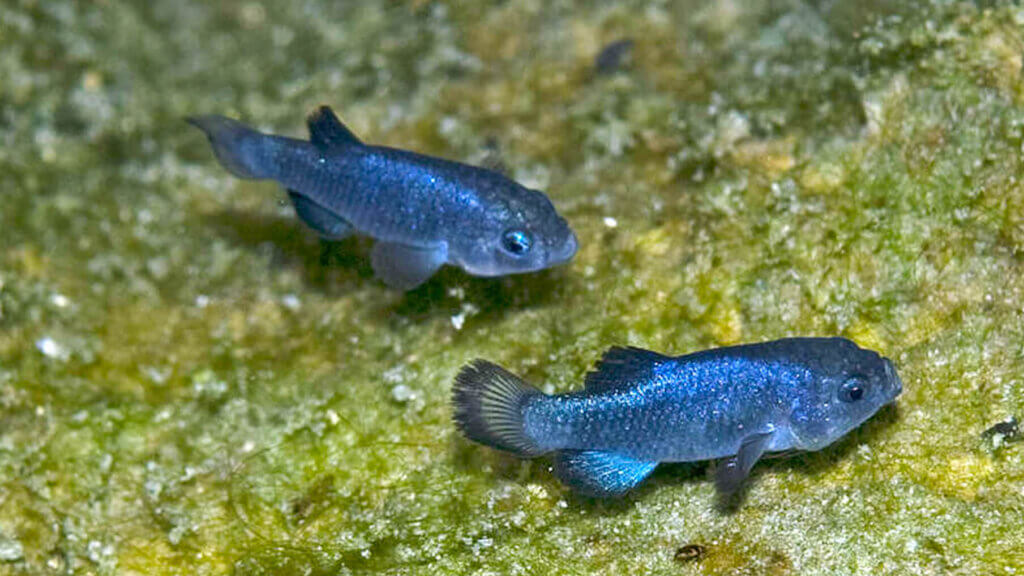
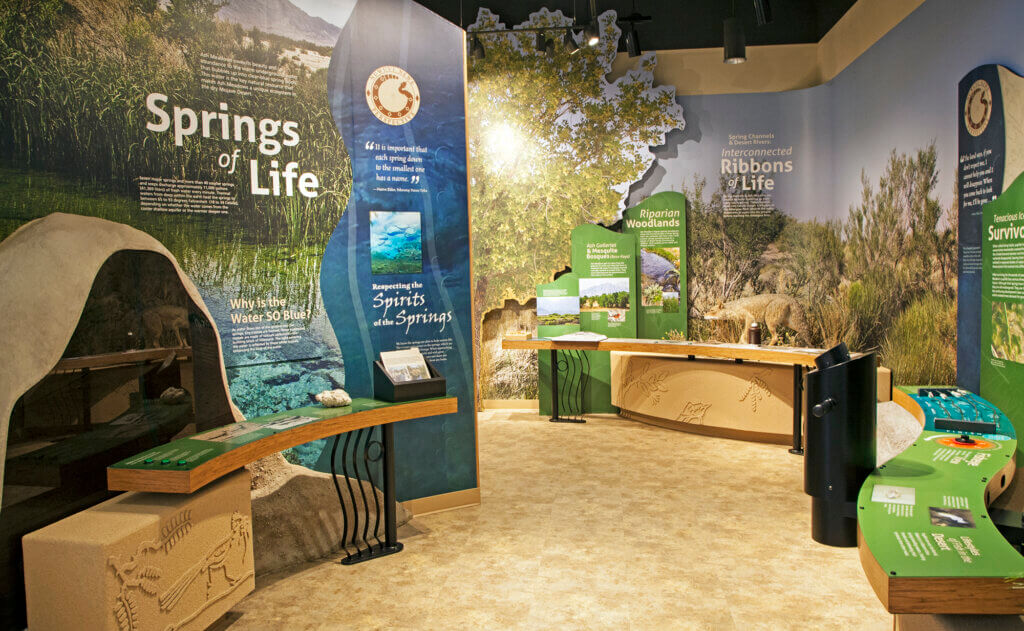
2. It Was the First Ever Species to be Classified as Endangered
Yep. Read it and weep, friends. The Devils Hole pupfish was already on the radar of desert dwellers and scientists back in the 1930s, prompting the unwavering research of Ichthyologist Robert Rush Miller to shine a light on this incredibly fascinating and tremendously rare species of fish. As the years went by, this southern section of Nevada drew more and more attention—partially because it’s straight-up visually stunning (you know what I’m talking about if you’ve been lucky enough to visit), but also because, in 1952, the area found itself newly protected when President Truman granted Death Valley its National Monument status. Suddenly, the word was out: this place was cool. By the 1960s, hydrogeologists realized this location was unlike anywhere else on Planet Earth and installed hydrographical instruments to keep tabs on what was going down beneath the surface. Crazy, right? When, in 1966, the Endangered Species Preservation Act became a thing, the findings of Miller’s extensive studies decades earlier earned the Devils Hole pupfish first place in line at the protection office. Bragging rights on bragging rights.
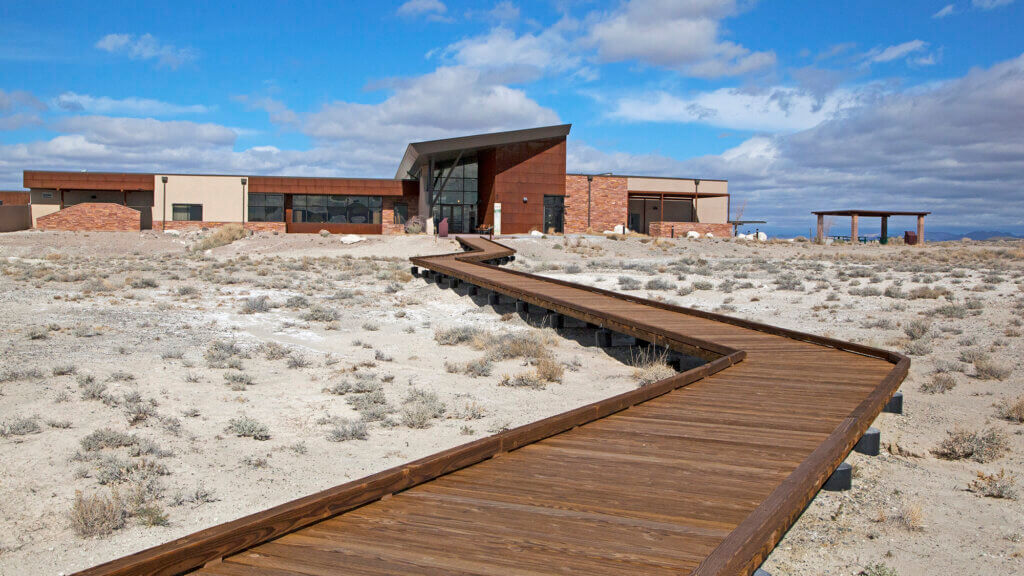
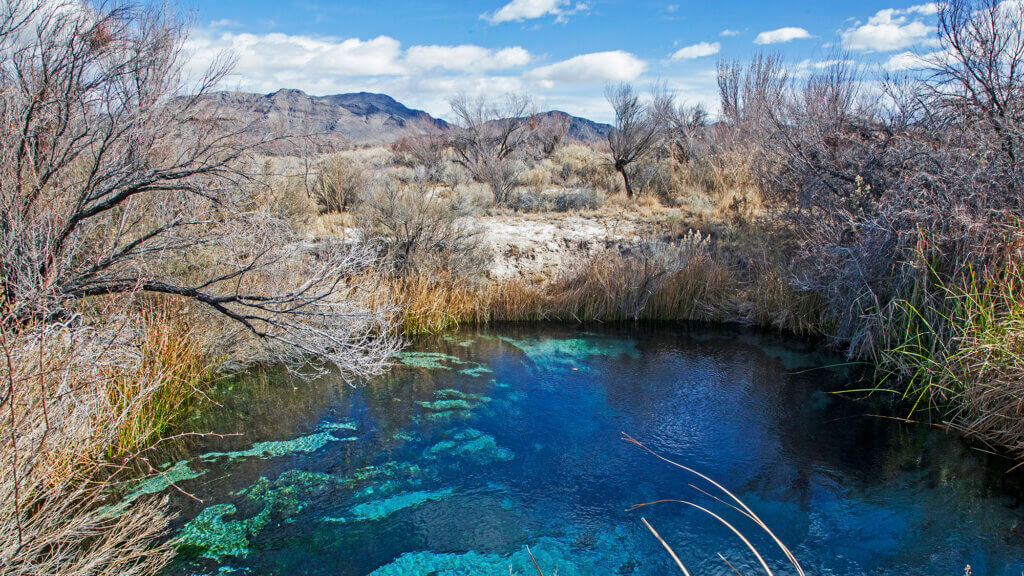
3. Finding this Unreal Desert Oasis Habitat
It might sound like we’re describing some legit sci-fi sorta stuff straight off the silver screen, but we assure you that this place is not only absolutely real, but also impressively accessible from the Las Vegas Strip itself and most places in southern California. You know when you think you’re in “middle-of-nowhere” Nevada? Let this inspire you to get that perception in check, because smack-dab in the center of what you might imagine to be desolate nothingness (like so many other endlessly double-take-worthy Nevada gems) lies the desert pupfish’s incredible habitat.
The place is Ash Meadows National Wildlife Refuge, and actually a very hard-earned portion of the Death Valley National Park complex, within the Amargosa Desert ecosystem. Maybe it’s because it’s more remote, a bit more of a challenge to access (if you’re coming from the CA side anyway,) or the fact that it’s not a glaring option in front of you the minute you roll into Death Valley headquarters. Bottom line: along with big-ticketers like Titus Canyon, Artist’s Palette and Badwater Basin, Ash Meadows totally merits a stop… a long one, at that.
After being wowed by the Devils Hole pupfish, be prepared: your understanding of the word “oasis” will finally make sense when you come to grips with the fact that TWENTY-FIVE other endemic plants and animals seek refuge from the surrounding desert at Ash Meadows—all specific varieties of life found literally nowhere else on the planet. Yeah, how about we make it middle-of-somewhere.
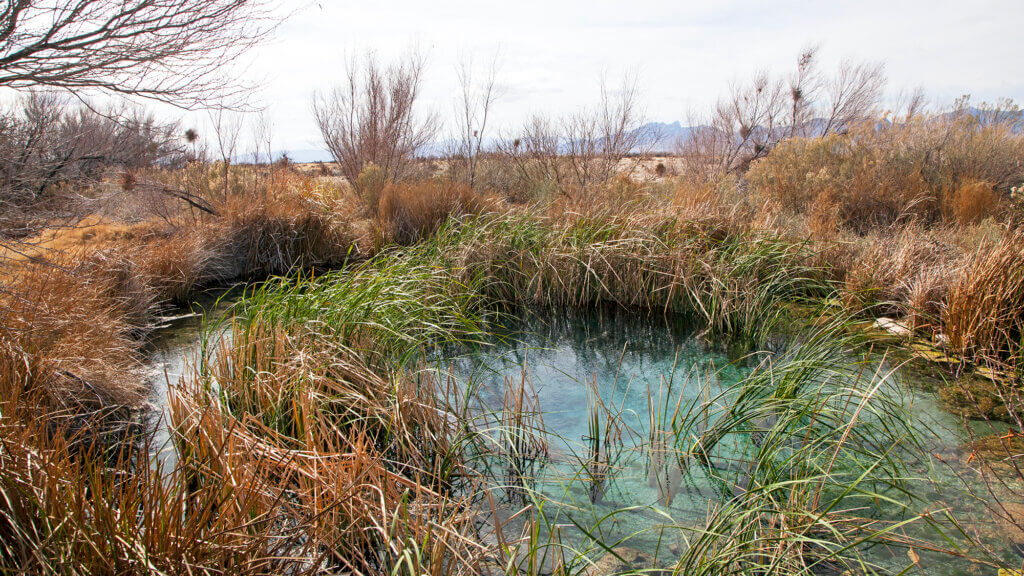
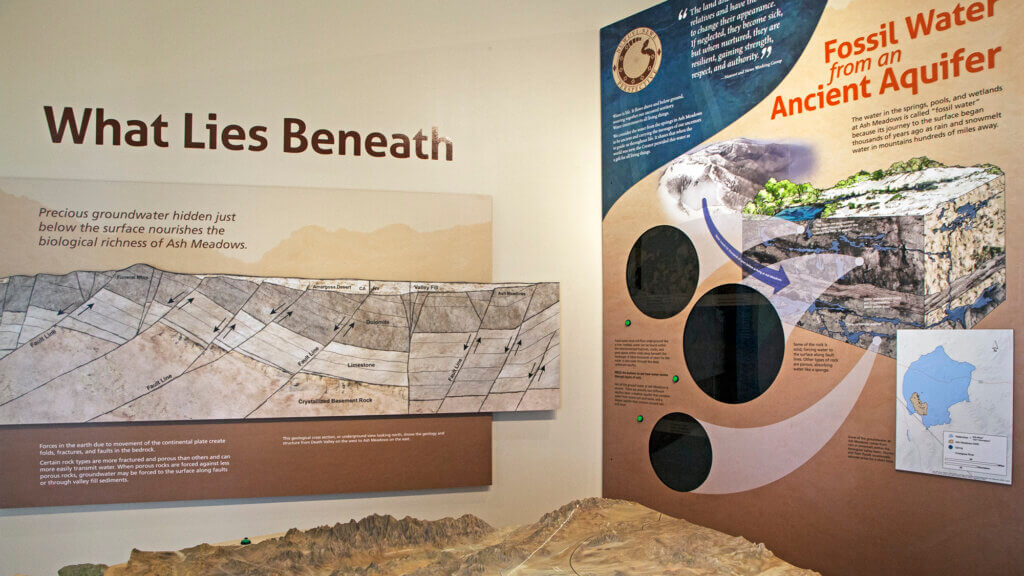
4. Say Hello to Natural Warm Springs Fed by an Underground, Prehistoric Ocean
There are so many qualities about Ash Meadows to impress even the snarkiest of desert snobs, but a feature you’d have to purposely avoid are the multitude of astonishing pockets of natural springs peppered throughout the area. Picture this: you’re walking along a series of prime boardwalks through a textbook desertscape, and then BAM—one of the clearest, Caribbean-esque pools of water you’d never see coming materializes in front of you. Like a legit desert mirage, these crystal clear springs certainly feel out of place, but are evidence of another time… an ancient time.
Though hard to imagine today, all of Death Valley and Ash Meadows was once completely submerged under water around 12,000 years ago. As the climate changed, water levels dramatically receded…completely drying it out to the state you can see today, leaving these unblemished pockets of water. Interestingly enough, as these pools became isolated from each other, the newly segregated fish slowly started evolving and adapting differently. That alone is over the top attractive, but how did those pools manage to hang on in one of the hottest and driest places in existence? Here’s where it gets interesting: these natural warm and cool springs are fed by a series of underground aquifers, sometimes called fossil water. If that doesn’t kick your imagination into high gear, there might be something seriously wrong.
The water in these pockets of pools continuously flows at whopping 10,000 gallons per minute, and something scientists believe to be the runoff from precipitation that fell on the surrounding mountains in the Pleistocene Era over 10,000 years ago. The water flows very, very slowly into the carbonate rock aquifer and becomes more and more alkali over time. And get this, enough of this water essentially forms an entire underground, prehistoric ocean that flows underneath the Nevada National Security Site and pushed upward to Ash Meadows along fault lines at specific geographical points. If that’s not enough to wet your whistle, a study conducted at BYU in 2010 confirmed what hydrologists basically already knew: water arriving at Ash Meadows has completed a 15,000 year journey flowing from the area beneath the NNSS. This hydrological network connects massive channels of ancient aquifers throughout southeastern California and southwestern Nevada, Ash Meadows just happens to be one of the best examples. Total. Mindblower.
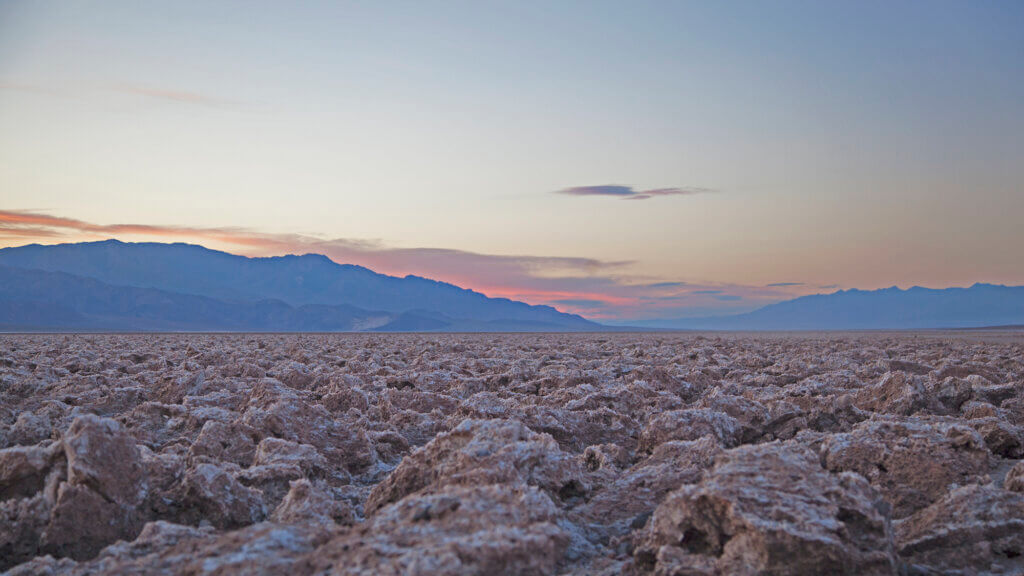
5. A Sacred Place for the Timbisha People
So, what was happening around 10,000 years ago in Ash Meadows, besides retreating water levels? Before European-American explorers were called west by the California gold fields, the area we now know as Ash Meadows NWR was home to the Timbisha People, a Southern Paiute branch of the Shoshone. All water is sacred to just about everyone in such an arid environment like this, but this area was something of a particularly spiritual nature for the Timbisha. When eyeing down these extremely vibrant pools, it’s a no-brainer that they’re a rarity and should be respected to the umpteenth degree. The Timbisha held the natural springs at Ash Meadows with the highest honor because they provided such an artery of life—dependable water sources like these pools meant clean drinking water, food and bathing on the regular.
Probably what’s most interesting is that the Timbisha not only worshiped the springs, but also authored a boatload of fascinating cultural folklore about them, too. In a version of one legend, mothers would warn their children not play in the spring-fed pools for too long because they believed creatures would eventually emerge from the pool’s unknown depths and swallow them whole. And the story of Tso’apittse—who the Timbisha believed was an evil giant who lived in the caves or springs in surrounding mountains—would reveal himself only to snatch and gobble up unsuspecting victims. So, see? It’s not just us and the folks at Death Valley who are thinkin’ this place has something special going on… to the Timbisha, it’s 9,000 year-old news.
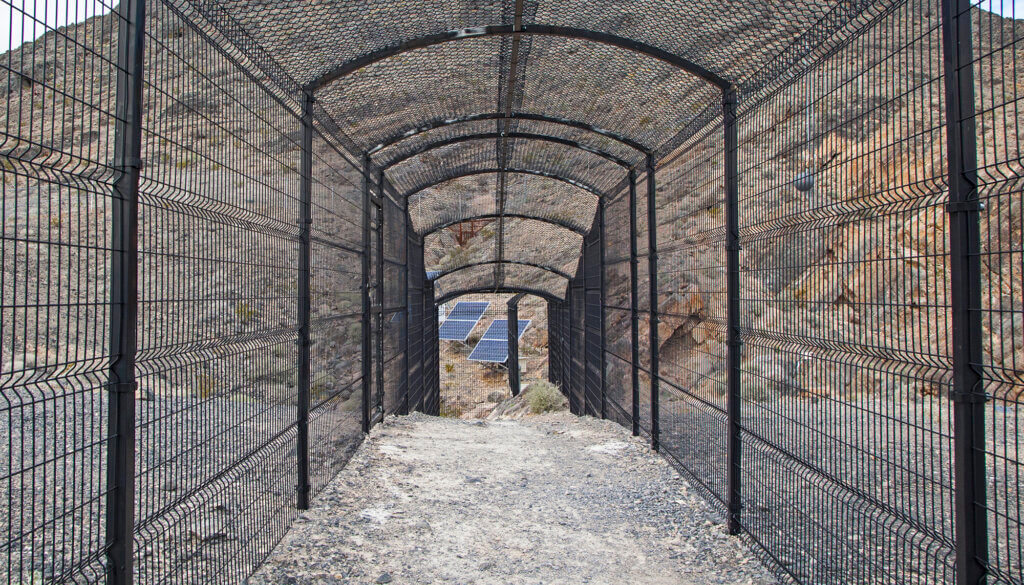
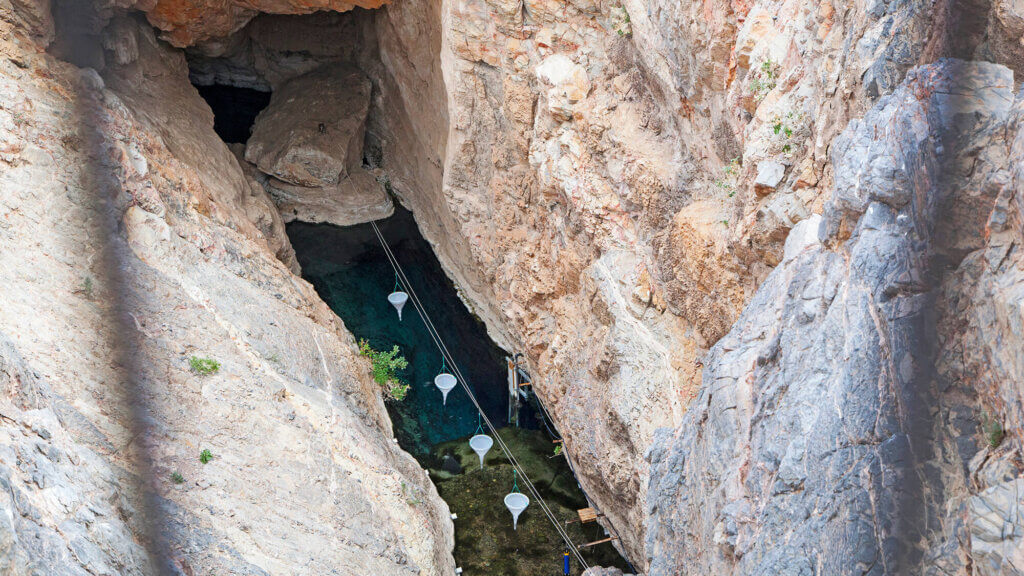
6. The One-and-Only Devils Hole
This ultra-unique, teensy endangered fish lives in this crazy habitat unlike anywhere else in the world—DEVILS HOLE. Just look at the photo pictured above; this place needs barely needs an intro. Like we were talking about in #3, each of the natural springs—we’re talking every individual pool—at Ash Meadows basically has its own version of an ancient tiny fish. They were all essentially the same type when the area was totally covered in water, but as it dried up, the fish in each separate pool slowly started to evolve differently into a subspecies of the Pupfish. In short, there are several types of desert pupfish, but the Devils Hole desert pupfish is the rarest of them all. The reason? They were the first group of fish to be isolated in their own environment, confined to Devils Hole for 10,000 to 12,000 years. Far longer than any other fish at Death Valley, including its “nearest cousin,” the Ash Meadows Amargosa Pupfish, who’s also secured it’s own spot on the endangered species list.
The mere fact that this place is the habitat to the world’s rarest fish is satisfying enough, but—trust us—it gets even better. Perfectly camouflaged against the mountainside, this phenomenal cavern opened up 60,000 years ago. Sounds like exaggeration, but it really did go down that long ago. Like the other natural springs in Ash Meadows, Devils Hole is full of that extraordinary fossil water mentioned earlier, but this particular source is a natural warm spring sitting at a constant 92 degrees. Plus the water is a spectacular spectrum of crystal-clear blues, with pristine-as-they-come limestone walls. Together, they’re said to make up every color of the rainbow. Aside from its ancient aquifer carrying it through all these years, the 8-by-60-foot opening just so happens to be oriented in such a way that has catered to the Devils Hole desert pupfish’s extremely particular habitat needs. All of those physical features—not to mention hours of sunlight per day and other various environmental factors—are all qualities this very finicky fish doesn’t just prefer, but, due to its evolution, now depends on.
Its seriously narrow opening is more than enough reason to probe what lies beneath, right? Since we already know there is a complex maze of underground interconnected geological features, you may be thinking, this thing must reach crazy depths. You’re right… the thing is, Devils Hole is so profound, scientists haven’t been able to understand just how deep it actually is—as in they’ve never found the bottom. Research divers entered Devils Hole in 1991 and reached a depth of 436 feet, but could still see an additional 150 feet below before losing line of sight. What’s most fascinating is this: its depth is so complicated that researchers think it may be connected to other parts of the world. In 2012, a 7.2-magnitude earthquake in Oaxaca, Mexico—a place that’s 2,000 miles away from Ash Meadows—created a tsunami in Devils Hole. Visitors can get near Devils Hole via a fenced-in scaffolding, but, because it’s home to the rarest fish on Earth and part of a cavern we just can’t quite figure out yet, the thing is pretty locked down. I’m definitely OK with not being able to climb down in there… because after all, stuff way bigger than our lifetime is going on down here and conservation is quite simply mandatory.
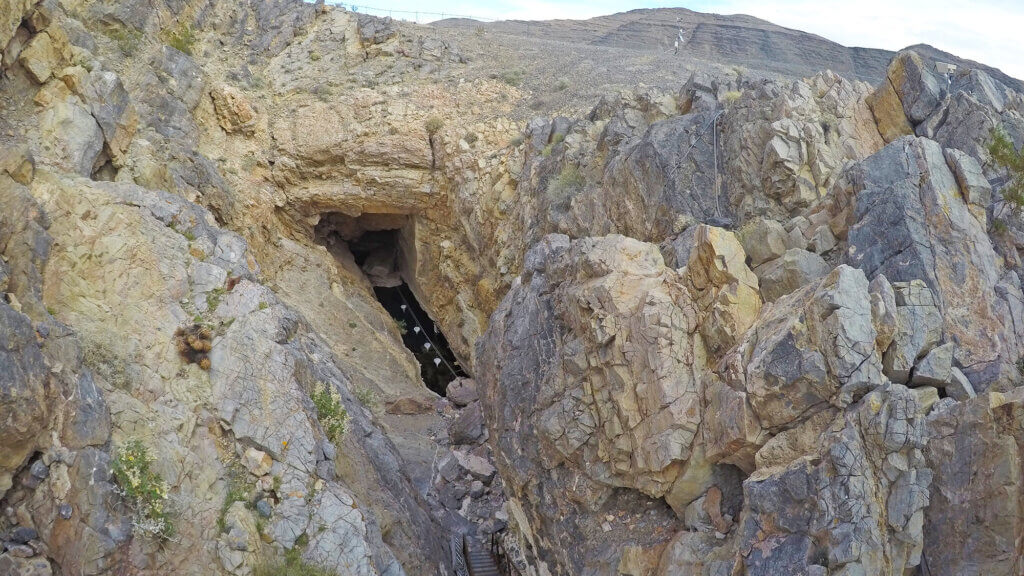
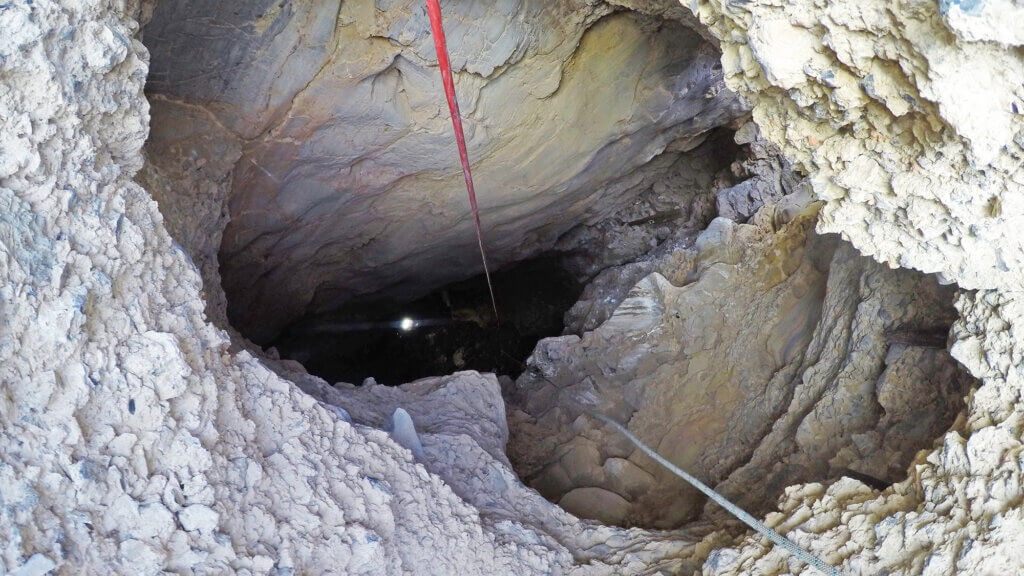
7. The Story Behind the Name
Ok, so we know there’s American Indian history going on here and that there were early pioneers passing through. If a place’s name doesn’t have some cultural significance to the people who originally dwelled there, it’s not uncommon to see it christened with “gold” or “silver” in its name, especially since Nevada is home to the most ghost towns in the U.S. and most abandoned mining features, too. In this case, neither are true… so how exactly was Devil’s Hole named? Well, the name Devils Hole was originally used to describe the cave system all the way back in 1891. Shockingly, the U.S. Department of Agriculture existed during this time and funded an expedition to map the flora and fauna in Death Valley, which was the first official scientific collection of fish species living here.
What’s most interesting is “devil” references were actually pretty commonplace in naming thermal. Scientists doing these types of field studies referred to a bunch of landscapes and geologic features around the nation, including states like New York, Pennsylvania and Utah. So when this super early study went down, their casual naming convention—Devils Hole—stuck and what we call this bewitching place a whole 120 years later.

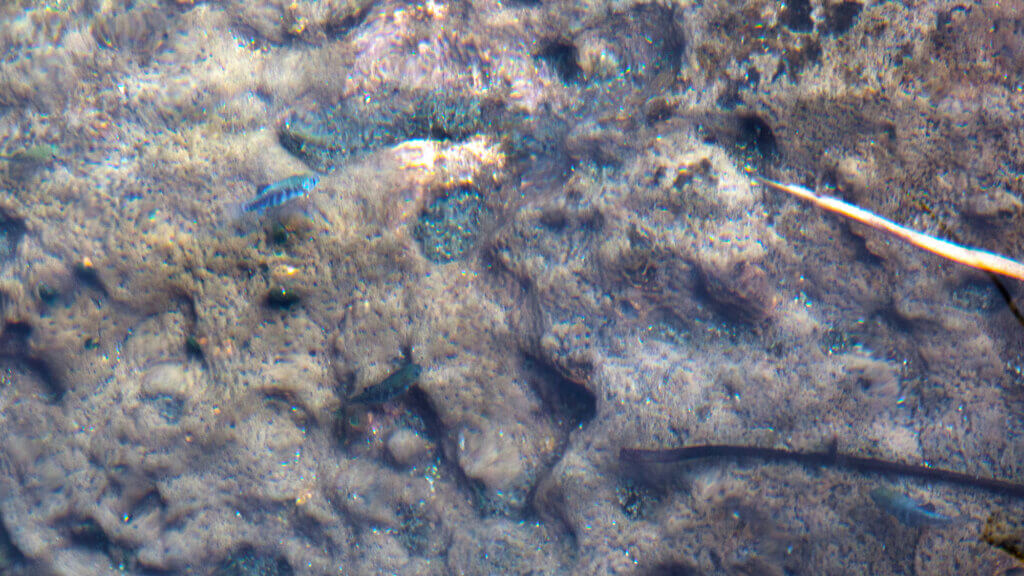
8. Gimme Those Pupfish Specs
If the mere fact that this creature has managed to stay afloat in what most would consider to be an inhospitable environment for TEN THOUSAND YEARS isn’t enough to keep you laser focused, relax. we got you. Surprisingly enough, a fish with such huge stats is actually very tiny—the smallest of all variety of Pupfish in fact. These dudes are typically average about ¾ of an inch in length, and have large heads but no pelvic fins. Males are usually an iridescent, deep solid blue with a black band on the tail (like the one pictured above) while females are almost olive colored. Although no one has been able to figure out just how deep their habitat is and this thing could go potentially on forever, the Devils Hole Pupfish ironically just wants to hang out near the surface. Irony at its finest, right? Though the Pupfish have been found as deep as 80ish feet in Devils Hole, they live near the top because they rely on shallowly submerged limestone. That, and get this: owls sometimes roost in this protected habitat, and the Pupfish will sometimes eat their nutrient-rich pellets that fall into the water.
The Devils Hole pupfish are laid back creatures, rarely defending their mating territories like some of their other more aggressive cousins. Their population changes depending on the season, but as it stands, the Devils Hole Pupfish is at an all time low count, sitting under 100. There are a thousand ways to describe just how remarkable these tiny beings are, but the fact of the matter is this: they beat all odds and are what scientists describe to be an American example of orphaned evolution. Totally special on special, the Devils Hole pupfish is the straight up symbol for conservation biology… and rightfully so.
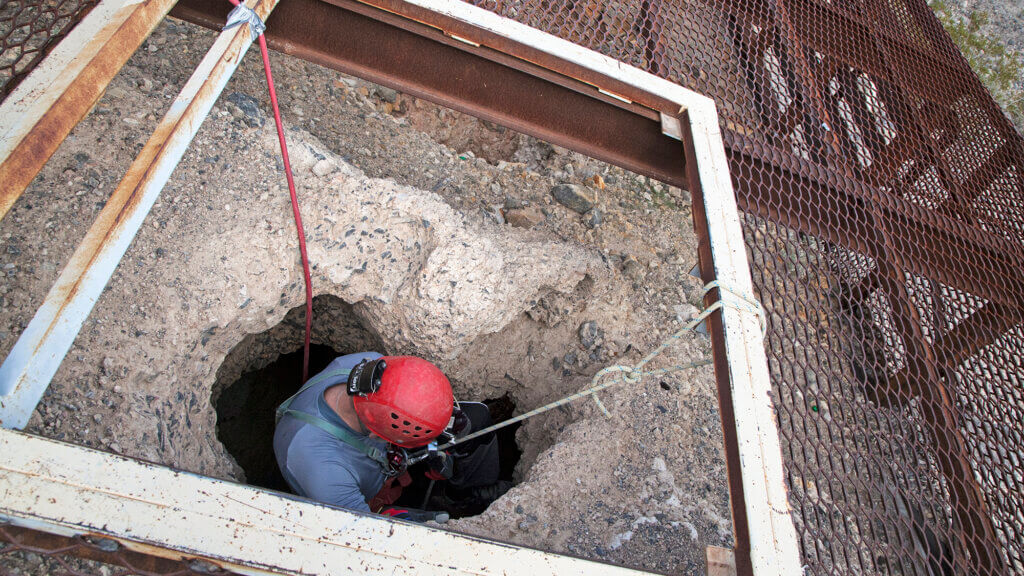
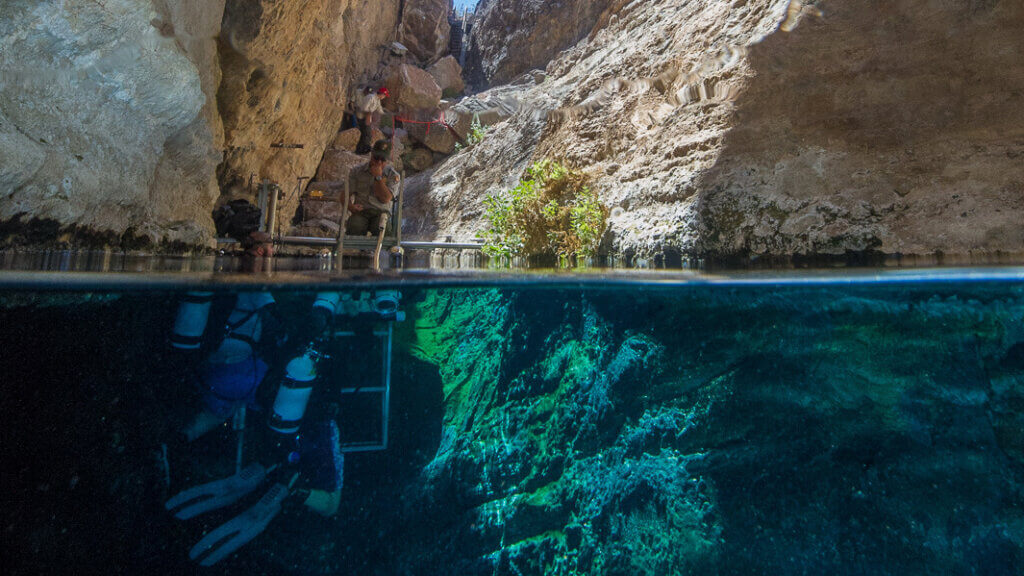
8. Equal Parks Mystery and Grandeur
When Death Valley became a protected National Monument in the 50s, it didn’t take long for this exotic landscape to catch the attention of explorers. The geography, range of light and tonal variation in the Nevada desert is enough to keep anyone who visits coming back for more, but once Devils Hole was out in the open, it drew famous adventurers like moths to a flame. Famous adventurers like Jim Houtz, to be exact, who had a fanatical obsession with deep sea diving. We still understand so little about the uncharted territory that exists in Devils Hole, but before he took the plunge, we really had little to go off of. Houtz was rarely indoors in his younger years, but became totally infatuated with diving… so much that he later became part of the U.S. Navy’s submarine forces on an underwater demolition team—a precursor to the infamous Navy SEALs. He spent his career with the Navy, but retired by the mid 1960s.
A retired guy with a highly-publicized mapping of an unexplored underwater cavern showing up in the news every other day? As you can imagine, not much could keep Houtz away, and he officially became the very first scuba diver to explore Devils Hole and even went on to complete over 300 dives in the cave. With that kind of diving swag, it’s easy to imagine Houtz had infinite prowess, but this one surely takes the cake… up until 1965, the world record holder for a deep cave dive was none other than legendary Jacques Cousteau. That is, until Houtz beat him, exceeding a 315 foot dive at none other than the fabulous Devils Hole.
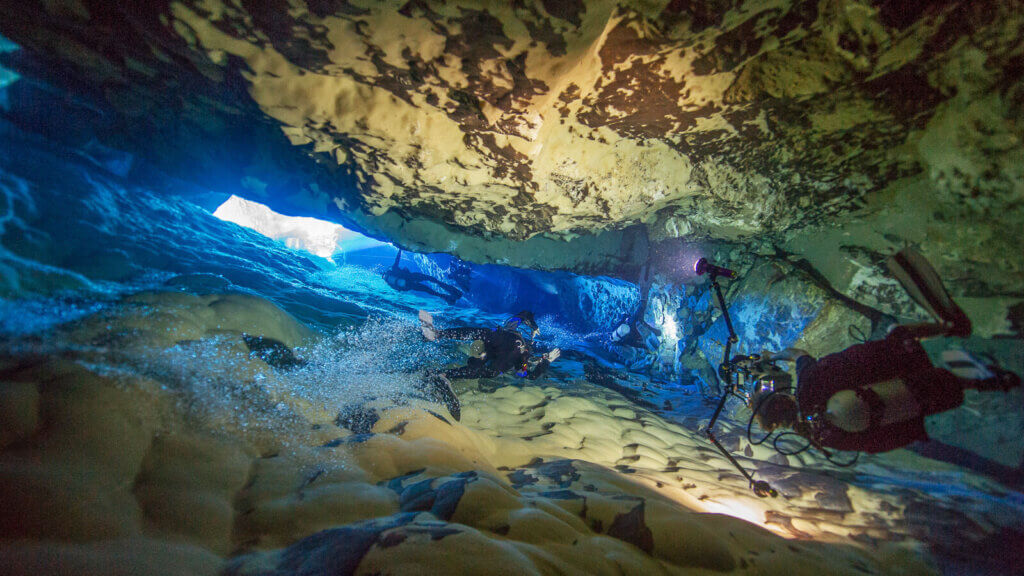
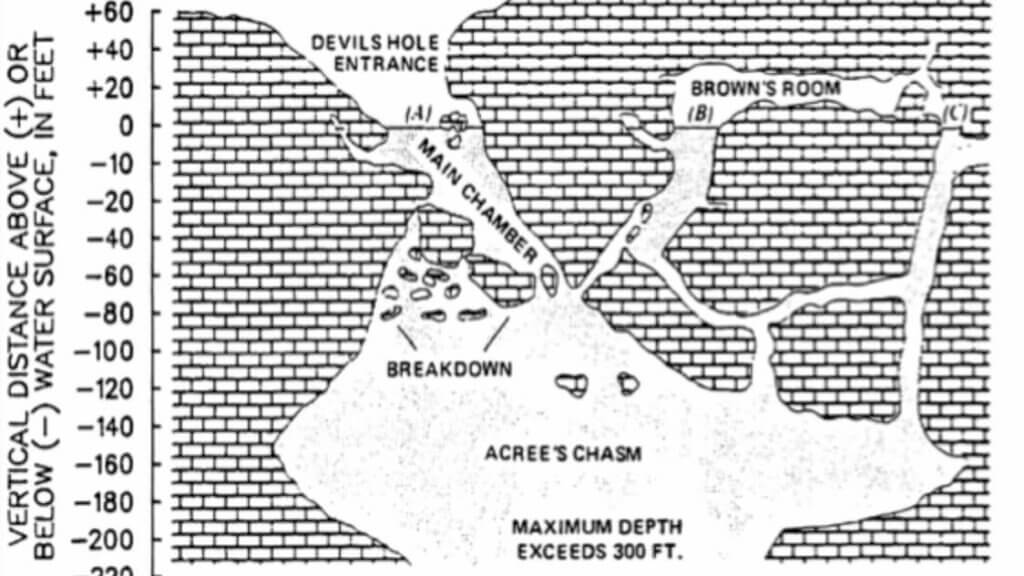
9. Extreme Complexities Below the Surface
As you might suspect, Death Valley and the discovery of Devils Hole was hugely broadcast all over the nation, but when Houtz led the endless, record-setting dives here, it upped the ante. If you were living during the 50s and 60s and paying any attention to the news, this place was most definitely on your radar. A couple of kids from Vegas started reading stories about Houtz’s dives and—come on—this was straight Journey to the Center of the Earth type stuff going on. I’m getting totally carried away now, 60ish years later, but imagine reacting to this stuff real time. We’d be hooked too. And get this: this story couldn’t get any more Vintage Vegas, either.
Paul Giancontieri first became enchanted with Devils Hole and what Houtz described as an ‘underground lake’ after seeing it the newspaper, so this 19 year old cafeteria worker at the Nevada Test Site convinced his 20 year old Vegas casino parking attendant brother-in-law David Rose that they needed to take a dip themselves. They convinced their buddy, Bill Alter and his younger brother Jack to come along, so on a warm summer night in 1965, the four boys jumped the fence surrounding Devils Hole to illegally explore its mysterious underwater caverns. While Paul, David and Bill dove in, Jack was the lookout. When Paul didn’t resurface, David and Bill went back in to look for him, but Bill turned back after he lost sight of David. But the thing is, neither Paul or David never returned, and their bodies were never found.
And you want to know irony at its finest? Houtz, the accomplished diver that inspired their illicit jaunt, was the very diver who was called in by the government to lead their 36 hour long search and rescue mission. Though Houtz and team of trained military personnel and other volunteer drivers conducted numerous dives in an effort to recover the brother’s in law, the search and rescue mission was ultimately called off. The only recoverable items found were a diving mask and snorkel, along with a flashlight tied to a ledge 100 feet below the surface—most likely serving as a failed breadcrumb of sorts. During this rescue mission, though untethered and unable to reach the bottom, Houtz described the underground channels connecting “room” to room as infinite.
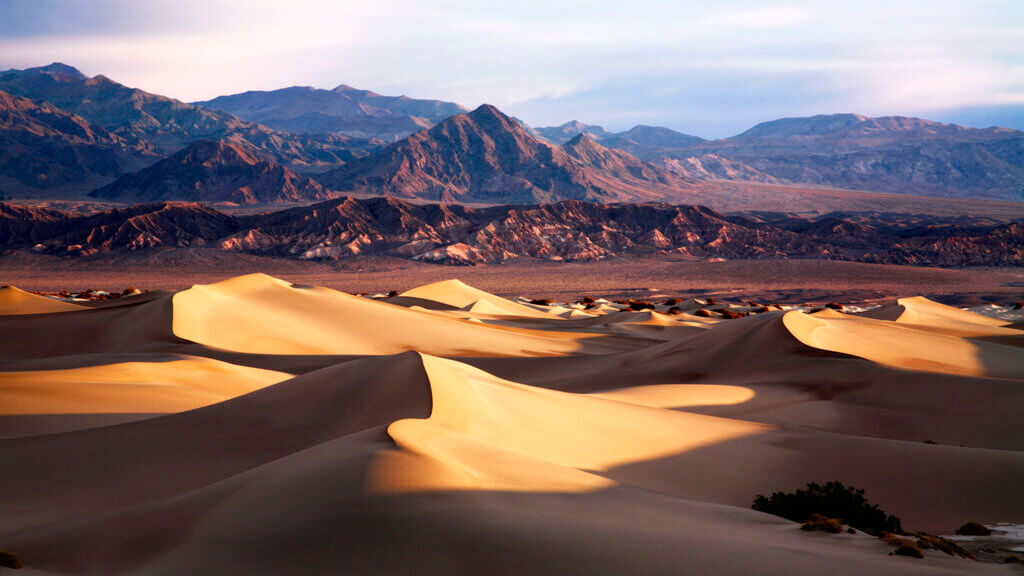
10. Bring on that Weird Nevada
Not that it’s particularly thrilling to tie an over the top amazing location with one of the hugest wackos of all time, but here’s some pop culture you might dig. It’s no secret that Charlie Manson and his gang of nutsos were creeping around the Nevada deserts right before they went on their horrid killing spree in the 60s. He was enchanted with the desert and, whether it was in Nevada or southern California, story goes that he and all his brainwashed friends staked out at various remote locations for up to several weeks. Turns out, it wasn’t just the Timbisha and modern day scientists who were completely infatuated with Devils Hole in the 1960s… even Charles Manson was drawn to this wondrous place for its cryptic qualities.
Supposedly, Manson thought Death Valley had a portal to the underworld, and basically became obsessed trying to find it. They wanted to find it so he and his “Family” could spend their time during what they believed to be an upcoming apocalypse caused by a “race war.” That, and he was most likely looking for a place where he and his cult following would be able to set up shop for a while. Story goes that when he finally found Devils Hole, he sat near the edge, staring into the unknown depths and mediated for three days straight. He believed it fit the criteria for a portal to hell—he just needed to figure out a way to drain it. Ha, yeah, OK. Good one Charlie. We know how that would turn out. #NVWildlife
EDITOR’S NOTE: Information for this article was gathered from a multitude of sources, including Mojave Project: Divining Devils Hole. For even more information on this mystifying Nevada location, be sure to visit their site.
Get Inspired
Related Stories
